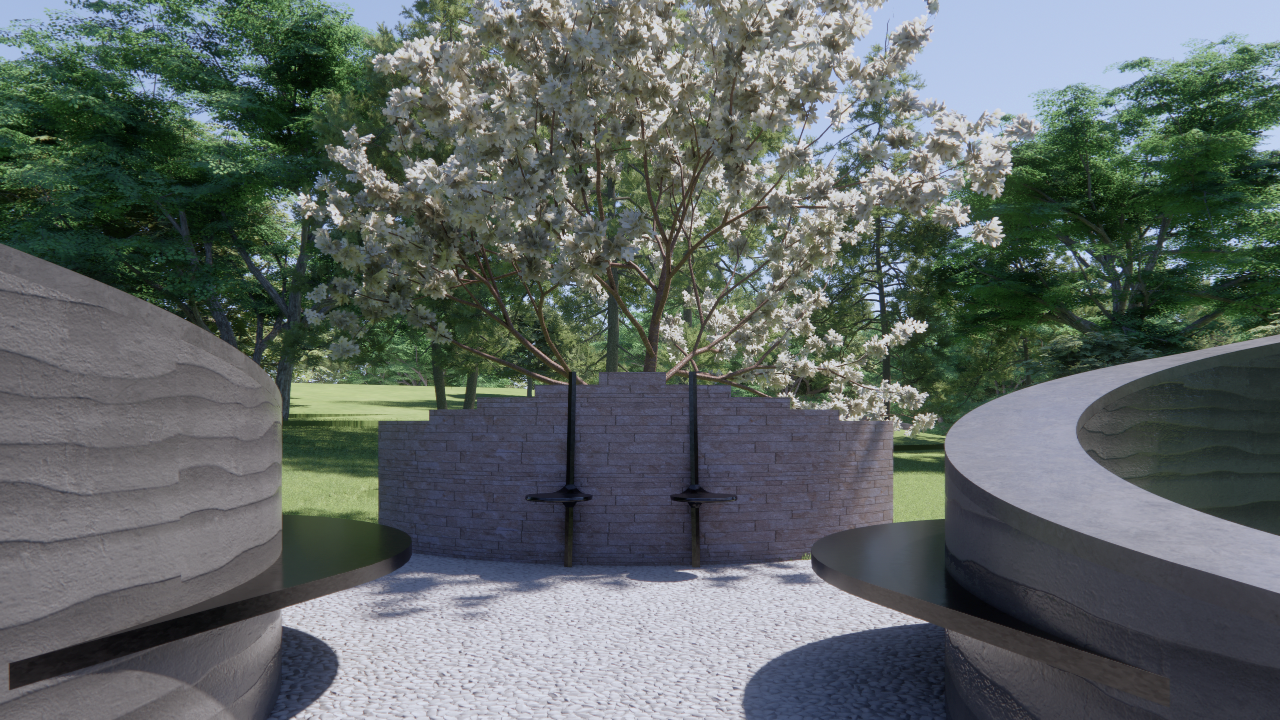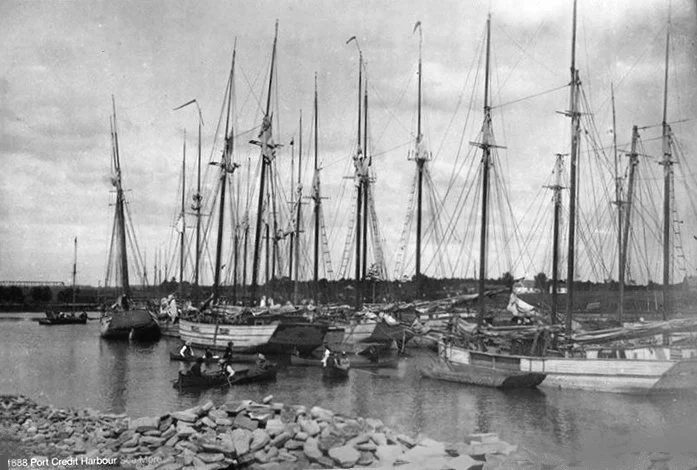Samuel Adams Memorial in Burnet Park
-
Type: Public Art, Landscape
Location: Oakville, Ontario
Client: Town of Oakville
Partner: SHIFT Landscape Architecture
Status: In Progress (Construction Summer 2025)
At SOCA, we approach public art as a powerful act of cultural storytelling—where memory and imagination converge in the landscape. Our work draws from overlooked histories, lived experience, and collective aspirations to craft spaces that honor the past while opening possibilities for the future. Through material, form, and spatial experience, we translate vision into built reality—making place for gathering, reflection, and intergenerational dialogue.
Our design for a memorial to Samuel Adams in Oakville, Ontario commemorates the life and legacy of a remarkable figure whose story embodies resilience, ingenuity, and community leadership. Set in Burnet Park, just steps from where Adams once lived, the memorial reintroduces salvaged foundation stones from his son’s 19th-century home—anchoring the site with authentic material memory. These stones are framed by newly constructed rammed earth walls that evoke permanence and craft. Sculptural iron seating gestures to Adams’ blacksmithing trade and longer histories of African ironwork, while the open, contemplative design invites visitors to connect with a profound local history of migration, invention, and Black community-building. The project honours Adams’ legacy not only as a skilled craftsman and entrepreneur, but as a builder of place—whose story continues to shape Oakville’s cultural landscape.
Learn more about Oakville’s Black history from TVO and from the Canadian Caribbean Association of Halton.
Foundation Stones from 104 Burnet Street
The Turner Chapel community of Oakville. (Courtesy of the Alvin Duncan Heritage Collection)
Port Credit Harbour, 1888
Plaque in Burnet Park, Oakville, Ontario
Turner African Methodist Episcopal Church.
Burnet Street and Oakville’s Black Community
As an official Port of Entry into Canada, Oakville saw the arrival of many African Americans: free and those escaping slavery. As one of the major destinations along the Underground Railroad, it was the first glimpse of freedom for many. The Underground Railroad saw over 40,000 African American people migrating from the United States to Canada between 1850 and 1860 alone.
Samuel Adams, a free African-American from Maryland, moved to the Oakville area circa 1855. He came with his wife and young family and set up a successful blacksmith practice in Bronte. His subsequent invention of an implement used to lift flat stones from the bottom of Lake Ontario, known as a ‘stonehooker’, made him a wealthy man. He used this wealth to help freedom seekers make a life for themselves in Upper Canada.
Samuel Adams worked with Reverend William J. Butler to organize a group of devout Black settlers who, in 1891, laid the cornerstone for the Turner African Methodist Episcopal Church. The Church was not only a large part of Oakville’s Black religious community, but it also served as a hub of social activity. Samuel’s son, Jeremiah B. Adams, was a dedicated member of local society who worked at the Chisholm brothers’; mill and volunteered at the Church.
In 1909, Jeremiah and his wife Eliza, the daughter of Reverend Butler, purchased a home at the southwest corner of Burnet and Kerr streets. It was a two-storey stucco clad house where they raised their four daughters and two sons. Jeremiah and Eliza celebrated their 65th wedding anniversary together, both passing away shortly after in 1948. They left the house to their unmarried daughter, Nina Adams. From Nina, the house passed to other descendants of Jeremiah Adams in the Wayner, Duncan, and Skeete families and remained in the possession of Jeremiah Adams’; descendants for over 100 years.
The house was demolished in 2016 and stone from the foundation was salvaged for commemorative purposes.
Text from plaque.











